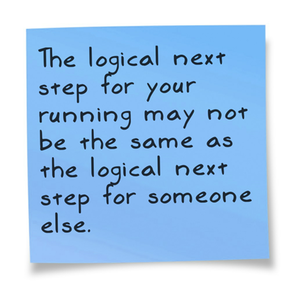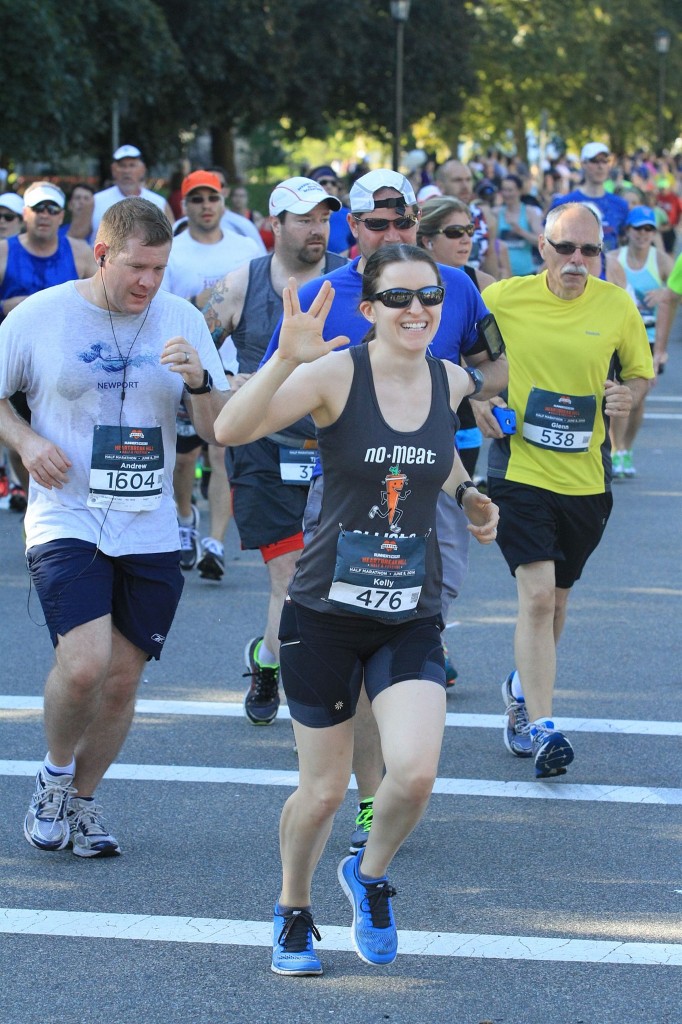I see it all the time on the active.com community message boards for running, or in conversations between runners. Someone will ask how they should be training for an event, and someone else will rattle off all kinds of advice about how many miles they should be running a week, how much strength training they should be doing, how to determine the pace of their intervals, tempo runs, long runs… AHHH!!! SLOW DOWN!!!
These are all great conversations, but there’s a question you need to ask first.
Where are you as a runner NOW, and what’s your end goal for this race?
My training just to complete my first half marathon is VERY different from the training of someone working to improve their time for their 7th half marathon.
When I trained for my first half marathon, I did no interval workouts, no tempo runs, no strength training. My only goal, and it was challenging enough, was to increase my weekly mileage by adding a mile to my long run every other week until I could run 13.1 miles. That was it. If someone had come in and told me that I should be running 35 miles a week and doing track repeats regularly in order to train for a half marathon, I probably would have cried.
Guess what? I met my goal. I felt elated, ridiculous, amazing. I had a specific end goal, complete my first half marathon, and I knew my abilities going in, which was to run 10 miles a week with my longest run being 6.2 miles.
Maybe I could have added track repeats also, and it would have helped my running, but I wasn’t at a place in my running life when I could manage more than one high intensity workout a week. Focusing on slowly lengthening my long run was enough for me at that point.
Whenever you’re adding something to your training, it’s important to be realistic about what your entry level running ability is. If you add too much intensity or volume to your training too quickly, you increase your risk of injury or burnout.
So before you ask someone how you should train for an event, before you look up a training schedule, think about where you are now and what you’re trying to accomplish. Then think about what the next logical step is. Maybe it’s to run 15 miles a week every few months and THEN start that half marathon training plan you have your eye on. Maybe it’s to add speed workouts each week until you’re used to them, and then increase your weekly mileage.
There’s plenty of great advice out there… but you can’t add it all at once. Start slow, choose smart, run well!




